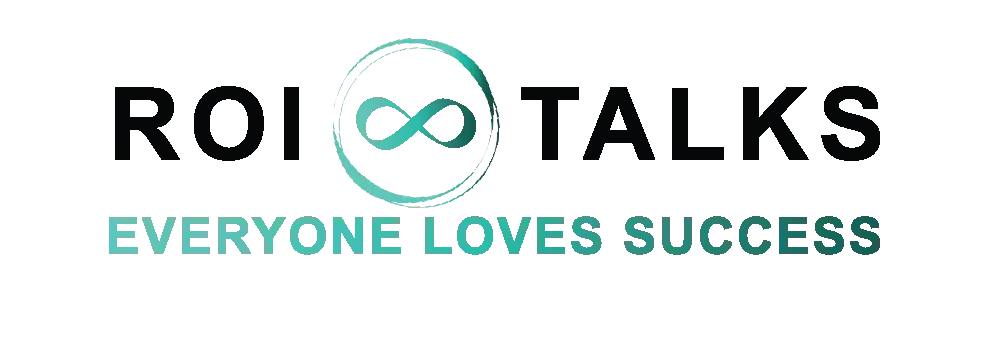Everyone Loves Success
Roi Talks Blog
The 5 Whys – Finding the Real Cause Behind Every Problem
When problems keep repeating at work, it is rarely because people are careless. More often, the real issue lies hidden beneath the surface. The 5 Whys method helps leaders and teams uncover that hidden cause. It turns quick reactions into calm, structured analysis and ensures that the same mistake is not made twice.
The 5 Whys is a simple yet powerful problem-solving tool used around the world. It helps teams move beyond symptoms and identify what truly went wrong.
Background and Origin
The 5 Whys technique was developed by Sakichi Toyoda, the founder of Toyota Industries, during the early 20th century. It later became a key part of the Toyota Production System, which influenced Lean Management practices globally.
Toyoda believed that every problem should be traced back to its root cause instead of stopping at the surface. The rule was simple: whenever something went wrong, ask “Why?” five times. Each answer reveals a deeper layer of the problem until the real reason becomes clear.
Over time, the 5 Whys became an essential part of Toyota’s success and was adopted by industries ranging from manufacturing to healthcare, education, and corporate operations. Its strength lies in its simplicity.
What the 5 Whys Does
The method works by guiding a group or individual through repeated questioning.
Define the Problem – Start with a clear statement of what happened.
Ask “Why?” – Identify the first reason for the problem.
Ask Again – Each new “Why?” explores a deeper cause.
Continue Until the Root Cause Is Found – Usually after four or five questions.
Design the Corrective Action – Fix the root cause, not the symptom.
The 5 Whys approach requires honesty and open discussion. It works best when the focus is on learning, not blaming. The goal is to uncover a process or system issue that can be corrected permanently.
Examples of the 5 Whys in Action
1. Manufacturing Process Delay
A production team experiences frequent machine breakdowns.
Problem: The assembly line stopped unexpectedly.
Why 1: A machine component failed.
Why 2: The component was not properly lubricated.
Why 3: Maintenance was skipped for two weeks.
Why 4: The maintenance team was understaffed.
Why 5: The company reduced shift coverage to save costs.
Result: The root cause was not the machine itself but a staffing decision that disrupted maintenance schedules. Once staffing was adjusted, the breakdowns stopped.
2. Customer Service Escalations
A retail company sees a rise in customer complaints about slow response times.
Problem: Customers are waiting too long for replies.
Why 1: Service representatives are overloaded with emails.
Why 2: Many emails are duplicates of previous complaints.
Why 3: The ticketing system does not merge repeat requests.
Why 4: The system’s auto-tag feature is not activated.
Why 5: No one was assigned to maintain system settings.
Result: The true issue was not staff inefficiency but a configuration error. Once ownership for system maintenance was assigned, complaint resolution times improved dramatically.
3. Team Collaboration Breakdown
A cross-functional project fails to deliver on time.
Problem: The project missed the delivery deadline.
Why 1: Design changes were introduced late.
Why 2: Marketing did not share updates with the design team.
Why 3: There was no shared communication platform.
Why 4: Each department used its own tracking tool.
Why 5: There was no standard system for cross-team communication.
Result: The real cause was the absence of a unified communication process. Once a shared collaboration tool was introduced, project coordination improved across departments.
Why the 5 Whys Matters for Tactical Intelligence
The 5 Whys sits at the centre of Tactical Intelligence because it cultivates the habit of calm curiosity. It encourages teams to look beyond immediate fixes and see the bigger system. By asking questions instead of assigning blame, it replaces emotional reactions with thoughtful analysis.
In moments of pressure, the 5 Whys helps leaders slow down just enough to make better decisions. It prevents wasted effort on temporary patches and builds a culture of continuous learning.
When teams apply this consistently, performance stabilises, quality improves, and collaboration strengthens.
Implementing the 5 Whys
Start with small problems that occur frequently. Gather the people closest to the issue and write the problem clearly on a board. Ask “Why?” repeatedly until you reach a cause that the team can control and fix. Document the answers, implement the solution, and follow up.
The goal is not to count to five but to reach the level where the real cause becomes visible. Sometimes it takes three questions; sometimes it takes seven. What matters is depth, not number.
The Power of Asking Why
In leadership and teamwork, the courage to ask “Why?” is more powerful than rushing to say “How?”. The 5 Whys transforms pressure into perspective. It creates a workplace where problems lead to learning rather than frustration.
By practising it regularly, organisations develop the clarity, composure, and confidence that define Tactical Intelligence.
This article is part of the Tactical Intelligence – Creative Problem Solving and Decision Making series. To explore how the 5 Whys and other clarity frameworks can strengthen decision-making in your organisation, please contact us.

ROI TALKS™
Marina Plaza - Office 1004 -1006
Dubai Marina, Dubai, UAE